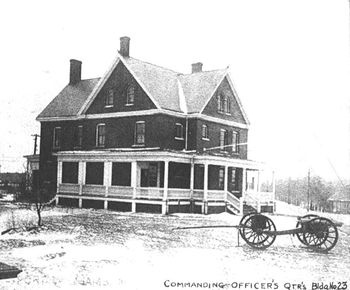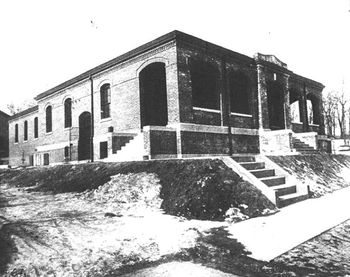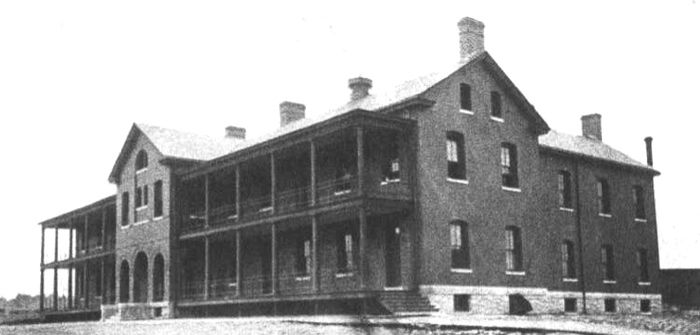Fort Williams (1)
|
Endicott Period (1890-1910)Part of the Harbor Defense of Portland, Maine. Land acquisition for the military reservation took place between 1872 and 1903 resulting in a military post totaling 90.45 acres. Construction began on 1 Jun 1873 at Portland Head on a battery known as the Battery at Portland Head. Endicott Period gun battery construction on Fort Williams began in 1893 on Battery DeHart and continued until the last of the six batteries was accepted for service in 1906. Four of the batteries used disappearing carriages to hide the guns after firing while two used fixed pedestal mounts. Post construction began in 1898 on what was initially a small two company coastal artillery post. Four sets of brick married officer quarters, two brick enlisted barracks, three sets of brick NCO quarters, a hospital, and a post exchange were among the buildings constructed for the first phase (1898-1904). A second building phase occurred between 1909 and 1911, it expanded the post to house seven companies of coast artillery and a band. Two new brick enlisted barracks were added, one of which was a double barracks. A band barracks had been added in 1906. Three sets of NCO quarters and five sets of officer quarters were added along with an admin building and bachelor officers quarters. By the end of 1911, the second building phase was complete.
World War I (1917-1918)Early in World War I the guns from Battery Garesche, Battery DeHart and Battery Sullivan had been listed for service abroad at the front in France. Battery Sullivan's guns were removed and shipped off in 1918 but they were replaced in 1919. Battery DeHart's guns were dismounted but were ordered remounted before they could be shipped. Battery Garesches guns were removed, shipped off and not returned but only one of the guns actually made it to France.
 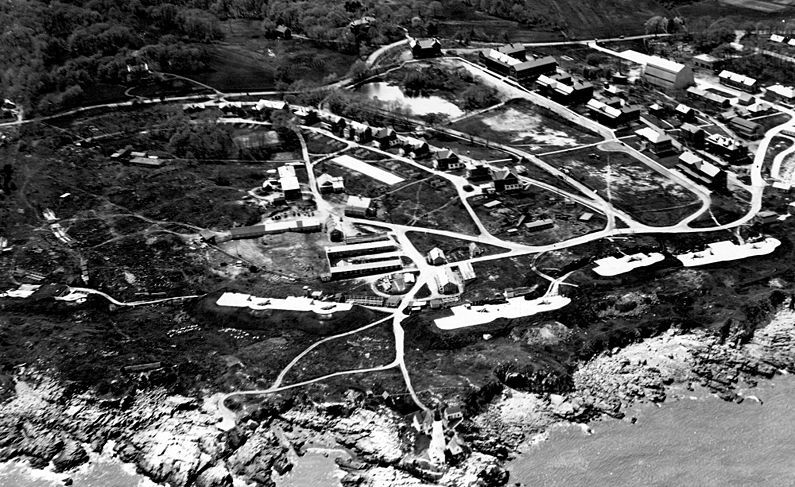
World War II (1941-1945)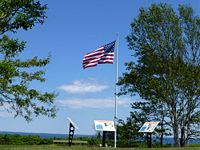 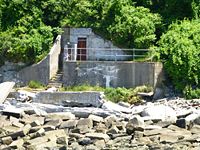 At the beginning of World War II only three Endicott Period gun batteries were still active, Battery Blair, Battery DeHart and Battery Keyes. Battery Blair and Battery DeHart were both considered obsolete and by the end of 1943, they were both ordered scrapped. The 3 inch Battery Keyes was the only Endicott Period gun battery to remain active through World War II. The only new gun battery built on Fort Wiliams during World War II was Battery AMTB 961. This battery was a four-gun rapid-fire 90mm battery with a dual role of protection against high-speed motor torpedo boats and aircraft attacks. This was the only new coast defense gun battery provided for Fort Williams by the 1940 Modernization Program and it was not accepted for service until November 1943. Fort Williams was the site of the Portland Harbor Entrance Control Post (HECP) that controlled all shipping entering or leaving Portland Harbor. The HECP was located at the top of a Hill overlooking the Portland Head Light and the entrance to Casco Bay. The Harbor Defense Command Post (HDCP) was collocated with the HECP. During World War II Portland Harbor was protected by a series of underwater defenses that included controlled underwater mines, underwater hydrophones, and underwater magnetic loop detectors. Many of the small caliber defenses of Portland were focused on protecting the minefields from small fast minesweepers and motor torpedo boats. The minefield defenses included 3" gun batteries, 6" gun batteries, 90mm AMTB gun batteries, and portable searchlights. The Portland Harbor Mine Fields were made up of twenty-four groups of 19 mines each. Mine casemate #1 at Fort Williams (1) controlled mine groups 1 to 8 while mine casemate #2 at Peak's Island controlled mine groups 9 to 24. The hydrophones and magnetic loop detectors were generally positioned in front of the mine groups to detect approaching ships. Ship tracks were plotted in the plotting rooms of both mine casemate #1 and #2. Control of the minefields came from the two mine casemates under a group command. Arming and firing the mines was done in the respective mine casemates. The mine explosive storage facility was located in the abandoned Battery Weymouth and Battery Honeycutt magazines on Fort McKinley. Also located at Fort McKinley was a mine storage building, a mine cable tank, a mine loading room, and a mining wharf. Sources:
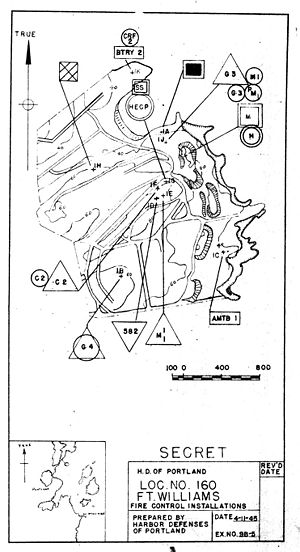
Fort Williams Lashup Radar SiteA portion of the old fort was used by the United States Air Force from June 1950 to 18 Oct 1951 as one of 44 temporary radar sites in the Lashup System. The Fort Williams site was given an ID of L-2 and was manned by the 657 AC&W Squadron operating a TPS-1B radar set. The Lashup system was established at the beginning of the Cold War to counter a growing threat from the Soviet Union. The Lashup system was replaced by 1952 with Permanent System Radar Sites. Cold War (1947-1991)Fort Williams was turned over to the General Services Administration (GSA) for disposition on 30 Jun 1962 and the GSA sold the property to the Town of Cape Elizabeth on 1 Dec 1964. The town created Fort Williams Park and in the process removed many of the buildings and buried or partially buried many of the gun batteries. Only Battery Keyes, Battery Garesche and Battery Hobart remain intact but several other batteries have their upper levels exposed.
Current StatusPart of Fort Williams City Park, Cape Elizabeth, Cumberland County, Maine.
See Also: Sources:
Links: Visited: 5 Jun 2013, 15 Jun 2012 | |||||||||||||||||||||||||||||||||||||||||||||||||||||||||||||||||||||||||||||||||||||||||||||||||||||||||||||||||
